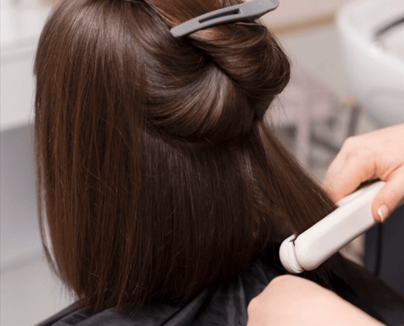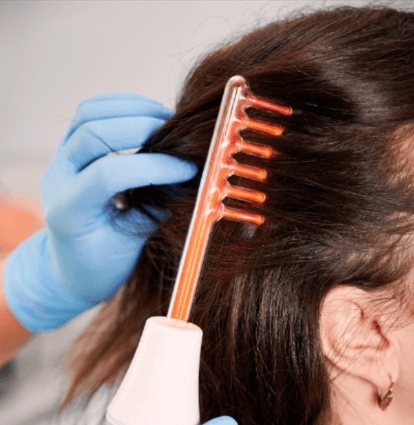Stem cell hair regrowth therapy is a breakthrough solution for hair thinning and loss. As interest grows, many patients ask:
👉 Does it work for everyone?
👉 What skin and hair types respond best to stem cell therapy?
The short answer is: Most people see some benefit, but certain skin types, hair textures, and hair loss conditions tend to respond more favorably than others.
In this post, we’ll break down which skin tones, hair types, and scalp conditions are ideal for stem cell hair regrowth, and what patients with different profiles can expect.
🧬 Quick Recap: How Does Stem Cell Hair Regrowth Work?
Stem cell therapy (or exosome therapy) for hair loss involves using regenerative cells to:
- Stimulate dormant or weak hair follicles
- Reduce inflammation in the scalp
- Increase blood flow and nutrient delivery
- Activate growth factors that promote follicle regeneration
These treatments don’t create new hair follicles but reinvigorate existing ones—particularly those not completely dead.
👤 Best Skin Types for Stem Cell Hair Therapy
Skin type matters, particularly when it comes to healing, sensitivity, and scalp health. Based on the Fitzpatrick Skin Type Scale, here’s how different skin types respond:
| Skin Type | Description | Response to Treatment |
|---|---|---|
| Type I–II | Fair skin, burns easily | Excellent response, minimal risk of irritation |
| Type III–IV | Olive or medium skin | Very good response, normal healing |
| Type V–VI | Brown to deep black skin | Good response, but must monitor for inflammation or post-treatment hyperpigmentation |
✔️ Best Responders:
- Type III–IV skin tends to show excellent regenerative response with low risk of pigmentation issues.
⚠️ Considerations for Darker Skin Tones (Types V–VI):
- Although results can be great, there’s a slightly increased risk of post-inflammatory hyperpigmentation (PIH).
- Always choose a provider experienced in treating ethnic or melanin-rich skin to reduce complications.
💇♂️ Best Hair Types for Stem Cell Therapy
Hair type is a key factor in how visible the results are and how easily the follicles respond to regeneration.
➤ Hair Texture and Thickness
| Hair Type | Response |
|---|---|
| Fine, thinning hair | Responds well; more noticeable density increase |
| Medium to thick hair | Excellent; strengthens weak strands and thickens hairline |
| Curly or coarse hair | Good response; but growth may appear slower due to curl pattern |
Patients with fine, thinning hair often see the most noticeable improvement in texture and volume. In curly or coiled hair types (e.g., Type 4), regrowth can be slower to appear visibly because of natural shrinkage and curl density.
➤ Hair Color
- Lighter hair (blonde, grey) may show less contrast in new growth, making progress subtle.
- Darker hair colors often show clearer visual improvement in thickness and fill-in.
🧠 Best Candidates for Stem Cell Hair Regrowth
While anyone experiencing hair thinning can try stem cell therapy, the ideal candidates include:
✅ Best Responders:
- Men and women with early to moderate hair thinning
- Patients with androgenetic alopecia (male/female pattern baldness)
- Those with postpartum or stress-induced hair loss
- Individuals with intact hair follicles (not completely bald)
- People who are not ready for surgery or hair transplant
❌ Less Ideal Responders:
- People with severe baldness (no active follicles)
- Patients with scarring alopecia (like lichen planopilaris or lupus-related hair loss)
- Individuals with autoimmune hair loss such as advanced alopecia areata (unless combined with other therapies)
🧪 What the Research Says
Clinical studies show that stem cell therapy is effective across diverse hair types and ethnicities, but success depends on the health and activity of existing follicles.
One study published in Stem Cells International found that:
- 75% of patients experienced noticeable regrowth within 6 months
- Patients with active, but miniaturized follicles responded best
- No major difference in results was observed across skin tones, provided scalp health was optimized
🛠️ Tips to Maximize Results for Any Hair or Skin Type
Regardless of your type, these practices help improve response to stem cell therapy:
- Healthy Scalp: Address dandruff, seborrheic dermatitis, or buildup before treatment
- Low Inflammation: Avoid irritants, smoking, or processed foods that increase inflammation
- Post-Care Compliance: Follow aftercare instructions strictly (no early washing, harsh chemicals, or scratching)
- Complementary Treatments: PRP, microneedling, and LED light therapy can boost outcomes
- Supplements: Biotin, zinc, vitamin D, and iron support follicle health
✅ Final Thoughts
Stem cell hair regrowth therapy is versatile and suitable for a wide range of skin tones and hair types. While some may see faster or more dramatic results based on their unique biology, good scalp health, early intervention, and consistent care matter more than ethnicity or hair texture.




